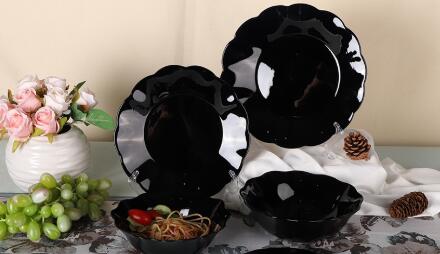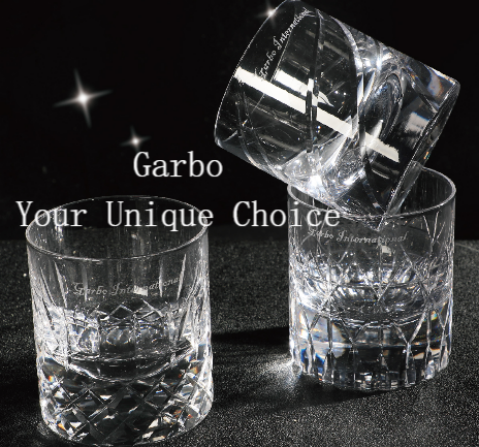Lalique Art Glass
Pulished on Oct. 16, 2018Even though he is known today for his antique art glass, René Lalique (1860-1945) began his career in 1881 as a freelance jeweler. Lalique’s fascination with three-dimensional decorative objects informed his Art Nouveau vases, perfume bottles, bowls, and decanters, which were typically pressed into molds to create patterns and reliefs of animals, foliage, or both. Later in his career, Lalique also designed stemware, tableware, clocks, and lamps.
Lalique’s contribution to the field of art glass began roughly in 1902, when he established a small glassworks at Clairfontaine outside of Paris. There he made molded glass plaques and decorative panels. He brought a jeweler’s precise eye to his first pieces, which were created using a jewelry casting process called cire perdue, or lost wax.
In cire perdue, a design would be carved by hand into wax, pressed into clay to create a mold, and then melted out (or lost) so that molten glass could be poured in. It was a primitive process, but Lalique made good use of it through the 1920s.
One of Lalique’s earliest clients was François Coty, who commissioned Lalique to design perfume bottles for him. Lalique would eventually design some 16 bottles for Coty, along with a number of other objects and the windows for Coty’s headquarters in New York at 712 Fifth Avenue (you can still see them today). The workload was so great that in 1909, Lalique rented a larger glassworks at Combs-la-Ville east of Paris. In 1910 he purchased that facility outright.
Combs-la-Ville had long attracted glassblowers, thanks to the area’s plentiful supplies of silica-rich sand. Lalique liked the look of the glass it created, and he chose not to add lead to his batches, even though it meant that his products would not be officially labeled as lead crystal. Lalique preferred his demi-crystal because it was inexpensive and easy to work with. Above all, he liked the milky opalescence of the final product.
Lalique collaborated with Coty through the 1930s. During this time, he also designed perfume bottles for other perfume makers, including d’Orsay and Roger et Gallet, for whom Lalique made a bottle crowned by one of his famous tiara stoppers (one of Lalique’s most copied designs). Later, as Lalique’s name became as synonymous with perfume bottles as Coty’s, he would make empty perfume bottles of his own, the Tantot and Amphitrite being but two examples.
World War I halted production at Combs-la-Ville from 1915 to 1919. And then, in the 1920s, Lalique really hit his stride. It was during this period that he produced a number of one-of-a-kind and limited run vases and sculptural objects. Some bore reliefs of pairs of parakeets and lovebirds, a motif he would use throughout his career. Others featured intricate and slightly fearsome wasps.
The Courges vases from this period are unusual if only because they are relatively rare examples that are saturated with color. Even though the vast majority of Lalique’s work from this period was pearly and opalescent, some of these gourds had metal oxides mixed into the glass to turn them blue (cobalt), red (chromium), or yellow (uranium).
By 1921, Lalique had opened a high-volume factory at Wingen-sur-Moder, in Alsace. The goal was to increase production and make Lalique’s work more affordable to the masses. In the 1920s, Lalique designed some 200 vases for production at Wingen. Here press-molding techniques were perfected. Most of the vases had wide necks so that the plunger used to force molten glass into the mold could be easily removed. The result was an exterior with crisp, sharp lines and an interior that was perfectly smooth.
Vases from this period include the ovoid Ronces, which appear to have been woven from a tangle of thorny vines. Some of the Ronces were translucent; others were amber, blue, or red, the latter being a difficult color to work with. Later, the Ronce design was repurposed as a base for a table lamp. Other vases were adorned with fang-bearing snakes or gazelles sitting beneath a canopy of stars. The molded surface of the decorative Languedoc vase was a tight pattern of what look like stylized coleus leaves.
The 1920s were also a decade for figurative vases and vessels. Most depicted women—Naïades consists of a frieze of mermaids holding aloft a shallow bowl—but some such as the Archers and Palèstre vases featured male forms. Lalique’s famous statuettes also leaned heavily to female nudes, as did his illuminated plaques, with Suzanne (a nude with outstretched arms holding a curtain of glass behind her) being perhaps his most famous.
From around 1925 to 1930, Lalique produced about 20 so-called car mascots, which were designed to replace the hood ornaments on luxury automobiles. Today, these heads of horses, peacocks, and roosters are among the most prized antique Laliques available, if you can even find one. Other examples include a goldfish, a wild boar, and a frog.
Lalique accepted a number of other high-profile architectural commissions during the 1920s, including the dining cars on the Orient Express, the Oviatt Building in Los Angeles, the Peace Hotel in Shanghai. As the 1930s arrived, Lalique’s work embraced Art Deco. Now the molding technologies Lalique had been refining seemed especially at home, particularly in a 1935 piece like Souston, an artichoke-shaped vase whose ridges and lines feel downright architectural.
Tableware and glassware also made an appearance in the 1930s. There were glasses and goblets, tumblers with a matching jug, and lots of carafes, each with its own handsome stopper. Plates and bowls sported swirling patterns suggesting sea urchins, anemones, and sand dollars.
Other pieces from the Depression years include lidded boxes of all sorts (both square and round),ashtrays, and clocks, including one timepiece housed within a panel of opalescent glass that has been molded with reliefs of Lalique’s beloved birds.
But this was the Depression, so in 1937 the glassworks at Combs-la-Ville closed. World War II shuttered a second Lalique factory, this time from 1940 to 1945, but Lalique himself stuck around until the Germans surrendered to Allied Forces on May 9, 1945. Two days later, one of the 20th century’s most influential designers would pass away, but his work ensures that he will never be forgotten.









